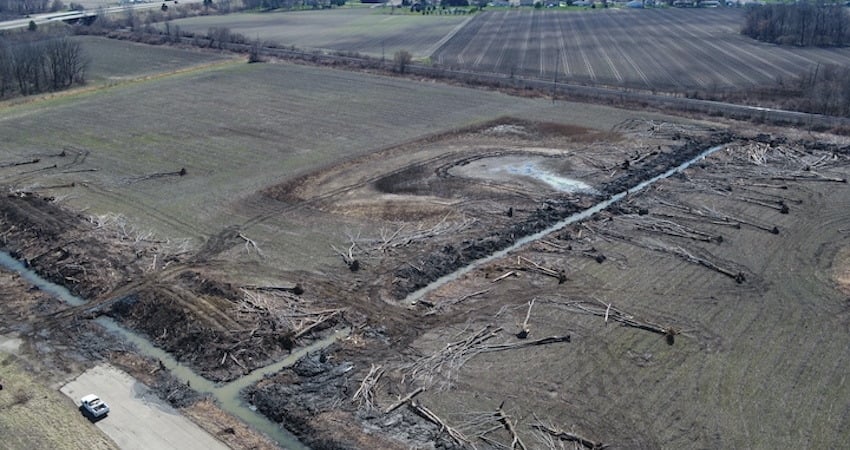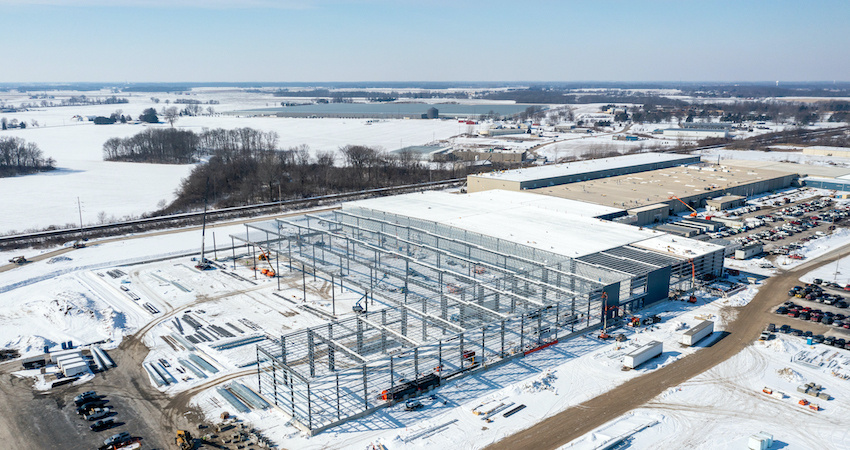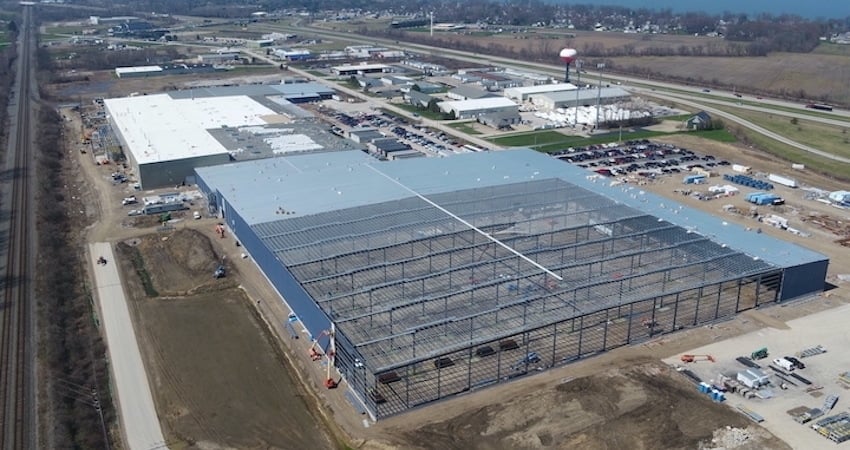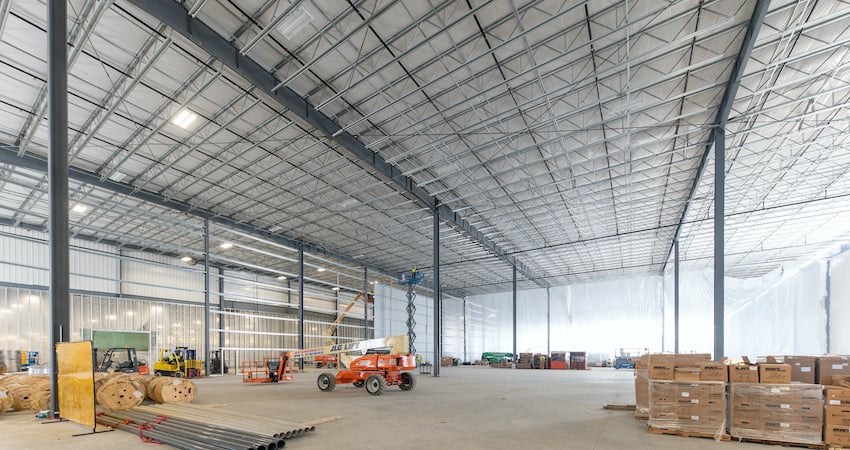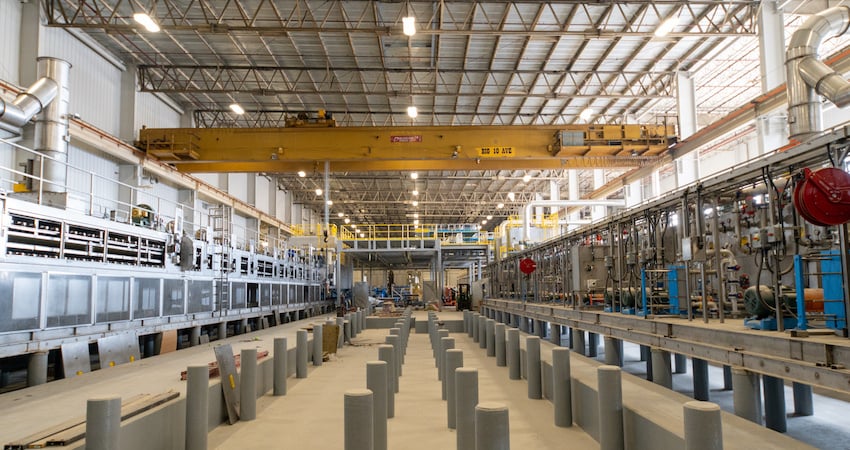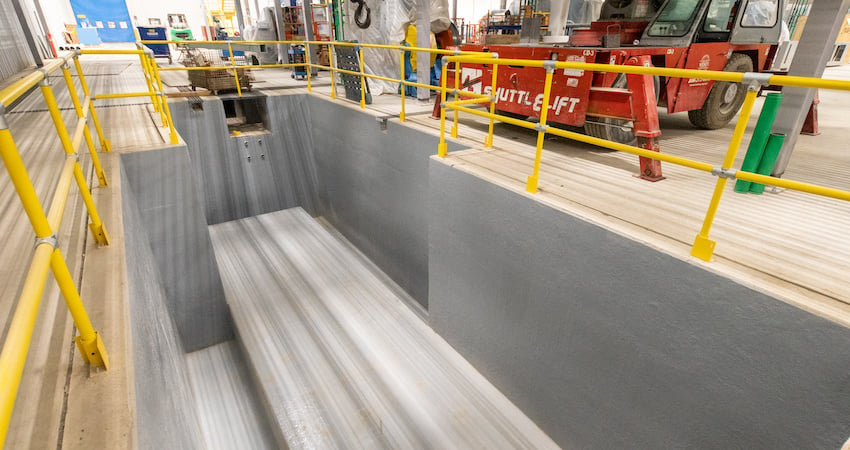Ardagh Metal Packaging relied on Rudolph Libbe Group for 4.5 billion can production goal
At a glance
Company:
Industry:
Service:
Structural Steel Erection, Carpentry, Concrete, Electrical, Guided Process Solutions, Equipment Setting / Rigging, Mechanical, Civil / Sitework
Ardagh Metal Packaging relied on Rudolph Libbe Group when it needed to meet a 4.5 billion can production goal by 2024.
With a $600 million investment to increase its capacity in the northern U.S., Ardagh needed to renovate or build a manufacturing plant that could help to meet this goal.
Huron, Ohio, proved to be an ideal location due to its proximity to multiple areas where the company supports its customers. Ardagh Metal Packaging, headquartered in Europe, is one of the world’s largest producers of aluminum beverage cans.
Rather than a greenfield build, Ardagh purchased an existing 300,000-square-foot existing facility. This older building required a massive interior demolition and renovation to add process lines, bulk storage warehouse/distribution, offices, toolroom, baler system, palletizing area and wastewater treatment.
All in all, the building would expand to approximately 900,000 square feet. GEM Inc., a member of the Rudolph Libbe Group was chosen to lead this project due to a successful Guided Process Solution (GPS) design/build project at Ardagh’s Olive Branch, MS, facility. While working on that project, GEM’s electrical team proved that GPS could be used for multiple construction capabilities. As the Olive Branch project wound down, GPS team members met with Ardagh to begin talking about design for the Huron facility. At this stage, Ardagh didn’t yet know the scope of work. Their typical buying process is a three-quote procurement system that would be very challenging for Huron. GEM was able to show how using the GPS system would be more efficient in construction costs and timing to complete the project.
Together the GEM and Ardagh teams worked through the design process during the ongoing pandemic months, relying on technology for remote meetings. With so many construction disciplines involved, the teams broke into separate groups with RLG managing construction/demolition set to start the end of February 2021. In addition to preconstruction, estimating and budgeting, GEM Inc. and Rudolph Libbe Inc. workers from both northwest and northeast Ohio self-performed all trades; electrical, mechanical, sheet metal, plumbing, structural steel, concrete, rough setting embedded plates for 150,000-pound pieces of equipment, civil, and carpentry.
GPS Design/Build System Helps to Solve Unique Design Challenges
Some of these challenges were uncovered once the project began involving issues with the existing structure that were previously unknown. Rectifying would have taken more time and costs had this been traditional construction management project delivery. With GPS, the team was able to pivot quickly to reallocate resources and correct while construction continued.
- Once foundations were started, residual oil from the previous owner’s process was discovered and required removal of three-quarters of the existing concrete and soil.
- The existing roof had to be completely replaced when it was found that existing insulation was painted and had begun flaking and falling. This would contaminate the process area, so mitigation was required. The old insulation was replaced with new foam insulation followed by installation of Thermoplastic Polyolefin (TPO) membrane over the standing-seam metal roof.
- Team members realized that none of the existing outdoor make-up area units (MAU) were able to be used due to their age, and in some cases, where additions were being installed, the units would have to be removed to make room.
Additions Accommodate Multiple Project Goals
Operating 24/7/365, Huron is a hybrid plant which can produce multiple size cans under one roof. Construction plans flexed to create additions for a new warehouse, two different process lines (cans and the ‘ends’ or tops of cans), offices, and a bulk storage area for chemicals.
- The 300,000-square-foot main canning process area was designed as two levels with a mezzanine for electrical controls of equipment and conveyors.
- 20,000-square-feet of the 50,000-square-foot main administrative office building and maintenance area will be LEED-certified Gold in support of Ardagh’s sustainability plans
- Another design change involved an increase in roof load to accommodate future rooftop solar panels.
- A substantial scrap system was built into the plant where aluminum is collected and taken to one of the three balers. As aluminum can be endlessly recycled, Ardagh is able to take full advantage of all scrap product
As of year-end 2022, there are four canning lines and two ‘end/top of can’ modular lines (producing 8 billion plus ends) running. Additional end modular lines are possible for the future. The footprint for the seven-line canning process became fully operational during the first quarter of 2023. With the new high-speed equipment installed in Olive Branch, Huron and a third plant, Ardagh has not only met but exceeded its capacity expectation.
